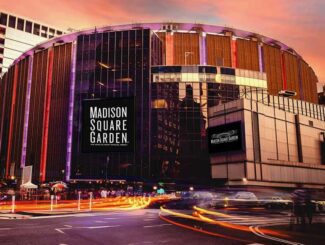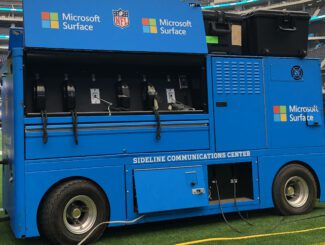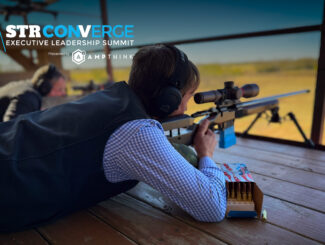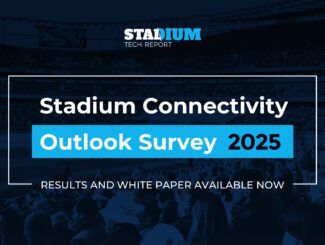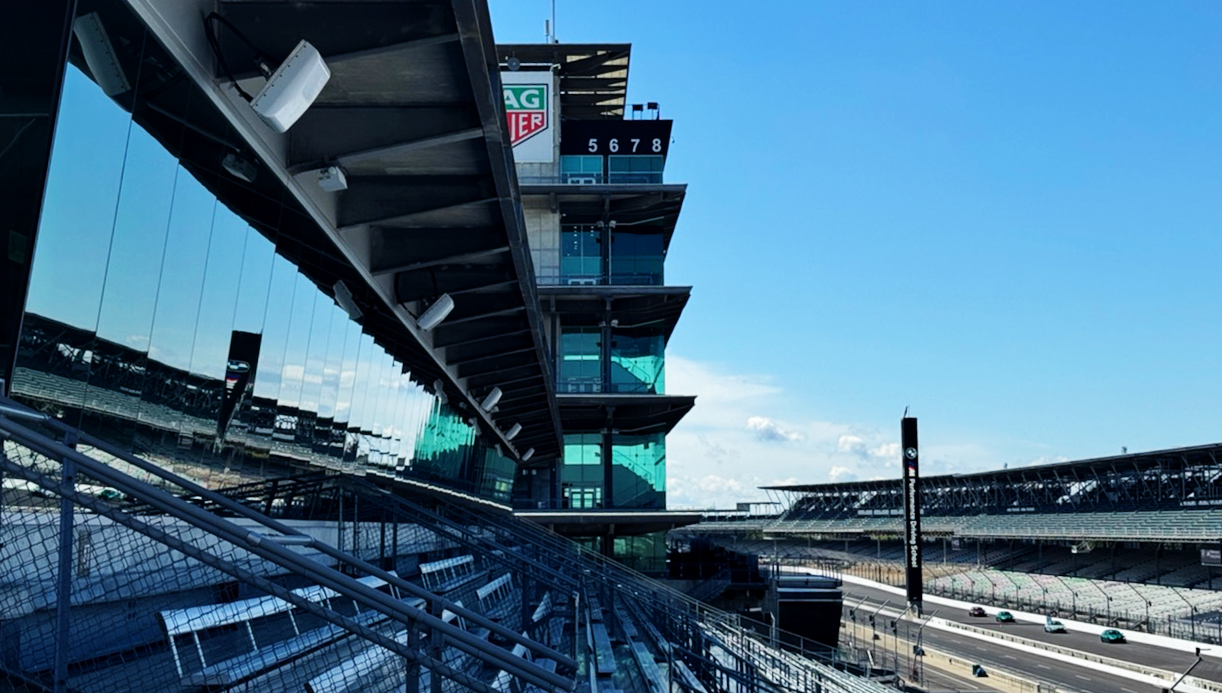
By Paul Kapustka
The market for distributed antenna systems (DAS) is going through a seismic shift, as changes in the DAS ecosystem point to a future premised on emerging business models. Equipment manufacturers, mobile network operators (“MNOs” or wireless carriers), integrators, third-party operators (“3POs”), and importantly, teams, venues, and venue operators will be negotiating a brave new world as they decide how to bring high-capacity cellular networks to large public venues (“LPVs”) in a manner that makes business sense for all stakeholders.
Join us as Stadium Tech Report explores the emerging DAS landscape in our LPV DAS Market Report. This introductory feature piece will explore changes in the equipment provider ecosystem, shed light on the business models of 3POs, explain the role of integrators, and discuss how three U.S. licensed spectrum owners (AT&T, T-Mobile, and Verizon) may be reshaping the market based on their own business priorities.
We will also touch on alternative strategies for addressing the ever-increasing demand for wireless connectivity. Matching wireless strategy, market conditions, and venue size will require creativity. Will the evolution of Wi-Fi – generally “unlicensed wireless” — cause venue stakeholders to rethink the economics of connectivity? Can venue operators really rely exclusively on the licensed spectrum community and DAS as a total solution? Or is there a need to refine the approach to hybrid networks that blend licensed and unlicensed technology to provide the best outcome for all involved? The answer lies only partially in the tech.
This article is the backstory for future pieces that will dive into the mechanics of the industry in our pursuit of supporting educated business decisions.

Many venue DAS costs don’t make fiscal sense for MNOs
Many who work in and around wireless technology use the term DAS as a catch-all for systems that provide wireless connectivity in venues. In fact, when we polled experts in the industry, the responses we got were surprisingly inconsistent (see our attempt at addressing “What a DAS is” in our LinkedIn post). What was clear is that the source of the definition mattered.
Avoiding the debate around the definition of a DAS, we use the term here to discuss a common approach for enabling MNOs or carriers to deliver a licensed cellular connection within a venue that is constructed such that external tower or adjacent rooftop antenna systems cannot deliver.
AT&T, one of the early advocates for DAS in stadiums and arenas, invested in DAS to keep its then-exclusive iPhone customers happy. Sporting events attended by well-heeled iPhone users quickly oversubscribed outdoor systems geared towards supporting passing traffic. As smart phone technology became ubiquitous, the other MNOs entered the market. Multi-MNO venues often led to inefficient deployments where each provider layered their own antenna network on top of another’s in facilities that were not designed to integrate antenna technology. In response, the market adopted systems that allowed all carriers to run over a common network of radios and antennas – neutral host DAS had come to stadiums!
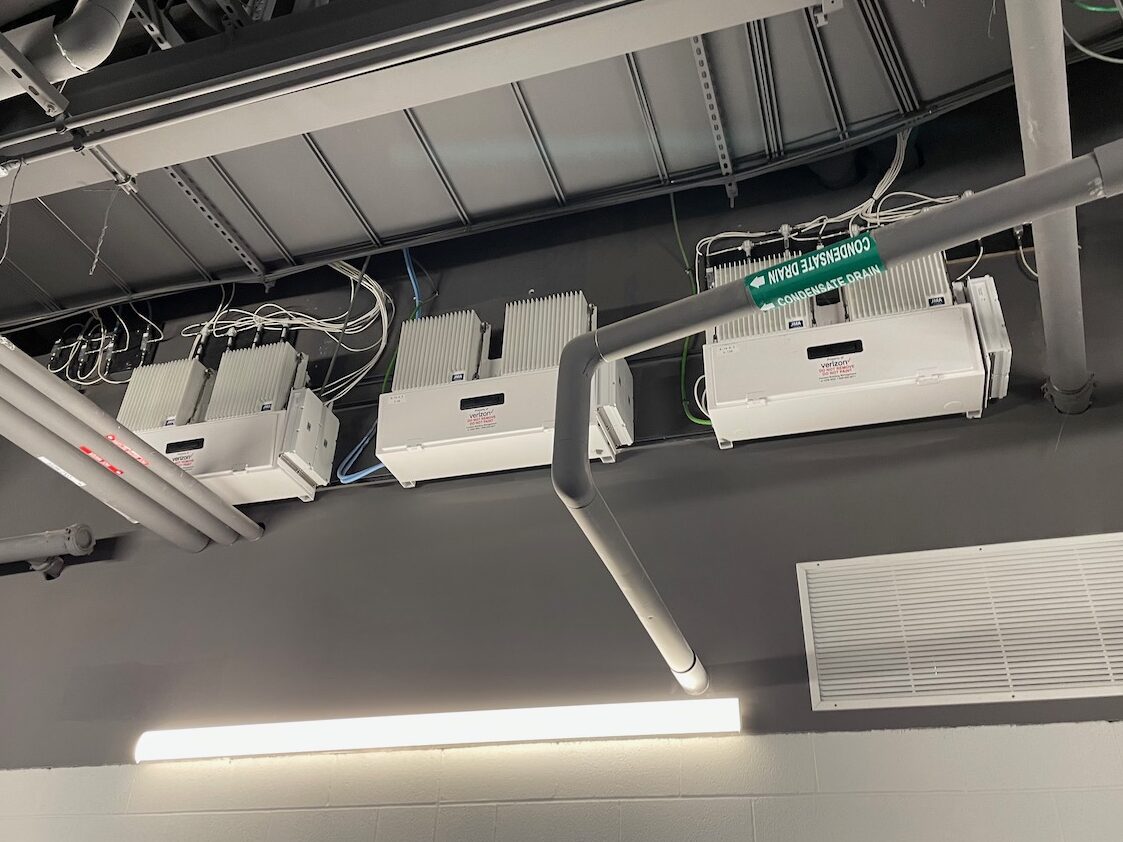
The premise of a neutral-host DAS is compelling. If you build a solution that is be shared by multiple providers, costs can be shared and the number of antennas reduced – satisfying the desires of venue owners and MNOs. Looking back, the almost instantaneous demand for in-building DAS created opportunity. Leveraging their experience building and leasing towers to the MNOs, 3POs jumped into the venue space promising the MNOs speed to market and venue owners a new source of revenue. With wireless demand skyrocketing, the deals were a rounding error on MNO P&Ls, very profitable for 3POs, and found money for the sporting community. The entire model was premised on the largess of telecom companies that ignored the obvious conclusion – the subscriber growth that fueled their financials couldn’t last forever. Eventually, everyone would have a cell phone.
And now? Cost is the issue, the elephant in the room. The technology is proven and has in fact progressed beyond the expectations of even the most forward-looking wireless prognosticators. Financial math, not technical calculation, is the problem. AT&T, Verizon, and T-Mobile are facing stagnation in subscriber growth, increasing capital costs associated with delivering new spectrum over more complex and costly systems, and declining ARPU (“average revenue per user” – the metric used to measure the value of each subscriber). They can no longer afford the profits of the middlemen. And, in many cases they no longer have the appetite to pay a premium to the venue to access their fans.
What happened? Today’s circumstances are the result of a combination of factors. Consumer demand for cellular devices in the U.S. is reaching saturation and subscriber growth has unlinked from market penetration and linked to population growth.
The cost of licensed cellular systems has grown significantly in the past decade – notably so in LPVs. Cellular 5G services and their replacement require a broader range of spectrum and increasingly complex supporting infrastructure. The densification of systems has separately required more radios and antennas to match the demand for wireless connectivity in venues. The cost of early DAS deployments were measured in the range of a few million dollars. Today, stadium deployments are measured in the tens of millions of dollars with some NFL caliber solutions costing well over $50 million.
With their legacy businesses under pressure, MNOs aren’t willing to write the checks to 3POs and venue operators that they wrote in the past. Going forward, they have to make investments that are solidly supported by subscriber acquisition or retention. Ask yourself, is there a return on investment in a facility that only hosts a few events a year?
In the past, MNOs were persuaded to pay what they sometimes call “the ransom” to get their licensed spectrum broadcast inside a venue, any venue, to ensure that their customers were always connected. But increasingly, the MNOs are showing themselves to be more budget-conscious, applying a more critical eye to the balance of subscriber numbers and system expenditure.
Your venue isn’t getting a ‘Super Bowl’ DAS
MNOs crowed that they didn’t need Wi-Fi after this year’s Super Bowl in New Orleans when the venues Wi-Fi network underdelivered (see STR’s Super Bowl coverage here: Verizon tells customers going to Super Bowl: Don’t use the stadium Wi-Fi, use Verizon 5G instead; and here: New reality or anomaly – Super Bowl 59 Wi-Fi usage off dramatically).
Perhaps they don’t. 5G technology has proven to be adept at concurrently serving up gigabytes of service to tens of thousands of fans at events the size of a Super Bowl. If you needed proof it came at Super Bowl 59 at Caesar’s Superdome. AT&T and Verizon combined to support 67 terabytes of wireless traffic in and around the venue. What was omitted from the social media bravado was the approximately $50 million spent on DAS upgrades.
There is little appetite to acknowledge the financial reality in public. So-called “Tier 1” venues with large capacity (70,000+) or massive event schedules (200+ events a year) may be assured MNOs will take their calls. Venues hosting “jewel” events will likely continue to benefit from MNO investment in their venues. Otherwise, the dollars aren’t there to build out similar networks in all of the public venues in North America.
Are you asking for a DAS deal at your college stadium that only hosts six or seven events a year, a small-market baseball, a basketball or hockey venue, or most soccer stadiums? Odds are that the negotiations will be contentious, or non-existent.
A New Path to Profitability
MNO interest in venues remains. But the economics will depend on a new type of subscription. As venues add more tech to their buildings, the MNOs see the opportunity to migrate those devices onto networks they own and operate. Imagine a stadium where every ticket scanner, point of sale terminal, bathroom sensor, and building management system (BMS) end point is tied to a pay for use data plan. Know that if you haven’t thought about it wireless service providers have.
Research shows that cellular IoT subscriptions will soon overtake personal-device subscriptions, and venues may be small gold mines for such IoT deals. Private wireless networks are the latest scheme to build a new subscription model.
Many IoT devices currently rely on the venue’s Wi-Fi network to connect these devices – no contract required. Are you ready to switch all of those devices onto a public or private wireless network owned and operated by a third party? There is an emerging industry waiting for your call, promising improved mobility or more secure services.
When the MNOs get the flu, the OEMs get the plague
The DAS ecosystem relies heavily on the three main U.S. cellular providers – AT&T, T-Mobile, and Verizon. They have publicly stated their disdain for the legacy DAS business model. What does that mean to existing suppliers and integrators? The response has been consolidation and divestiture of DAS related assets as major players decide the market is no longer a winner.
Behind JMA, which is the clear successful leader in the stadium DAS equipment race, there is currently a mixed bag. JMA continues to announce major stadium wins as their peers regroup.
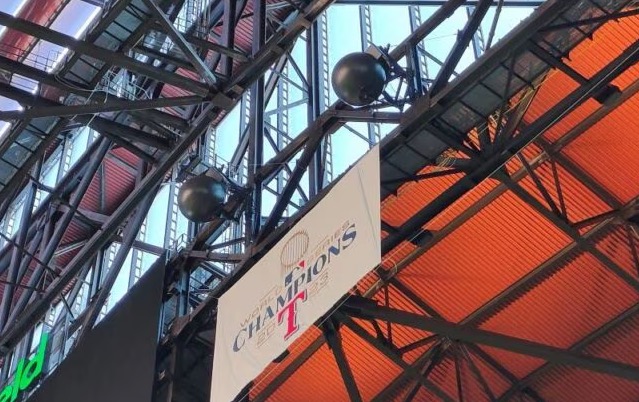
Solid, a company that delivered early stadium DAS deployments, has been mostly absent from the LPV market. Recently, they’ve committed to getting back into the North American LPV market after successes in large-scale transportation deployments such as the New York City subway system. They offer a broad portfolio of products and industry sources suggest that they have a price to performance advantage that will challenge JMA’s dominance.
Earlier this year, former DAS equipment providers CommScope and Corning both sold off their DAS business lines, CommScope to a company called Amphenol and Corning to a company named Airspan. Amphenol, a large concern in the wiring connectors business, has restored the Andrew name to the CommScope DAS brand (CommScope originally purchased the DAS line from Andrew).
Airspan is looking to add stadium DAS to its current portfolio, which includes building public networks, private networks and air-to-ground networks, including Wi-Fi services to planes. Can they gain a position in a market where they do not build their own hardware but rather rely on white-labeled equipment from overseas? Without the power of the Corning sales machine, can they open the door?
3POs as banks
Facing diminished appetite from the MNOs to fund in-building networks, the traditional 3POs have been looking for new sources of revenue. Smaller players are being consolidated into Wall Street funded conglomerates focused on investing capital rather than technical expertise.
Examples of this new breed include Boingo and ExteNet both owned by DigitalBridge, and Boldyn Networks (formerly Mobilitie). These traditional in-building companies are competing head to head with longer-tenured tower companies such as Crown Castle and American Tower. The question going forward for all these “professionalized” 3POs is where will they find assets that will provide the return on investment demanded by their owners. Will they find a sweet spot with MNOs? Or will their recent expansion into providing off balance sheet funding for other venue technology meet the needs of cash-strapped venue owners? What we know is that they have deep pockets. What we don’t know is if they can compete with more traditional lenders like JP Morgan who may prefer to lock up venue technology as fan expectations underline its importance to venue operations.
Integrators get bought or bow out
Integrator dollars are at the end of the chain. Money must filter down from MNOs and 3POs who benefit from costing data acquired through years or construction projects. They are expecting more for less, driving integrator margins down. With margins decreasing, some integrators have simply called it quits. Others have seen the writing on the wall, seeking the backing of larger entities with more diverse income streams. One of the acquiring entities is fiber juggernaut America Fujikura Ltd. (AFL). AFL has quietly acquired three integrators including stadium experts DAS Group Professionals (DGP), a firm which led venue-owned deployments at venues including Levi’s Stadium, Wrigley Field, and Allegiant Stadium.
If the DAS market for stadiums is tightening because of carrier health problems, why are big firms still placing bets that there is a business case to be made? It may be because they believe that organizational efficiencies can allow them to prosper under lower margin models. Or it may be that they are using the integrators as a sales channel for positioning their wares? What they’ve told us is they’re betting on a wave of building renovations and new stadium construction.
While the “Smart Stadium Market” may be smaller that other verticals like hospitality, health care or enterprise businesses, the addressable market is significant. According to our research, there are 709 total stadiums in the U.S. with capacity of more than 5,000. 96 of those have 40,000 or more seats. If only the top of that list is guaranteed to get a DAS, what will the future bring?
Is convergence inevitable?
The parallel growth in Wi-Fi capabilities provides venues an alternative to DAS – with limitations. Like a well-built DAS, a well-built Wi-Fi network can connect tens of thousands of end points. A Wi-Fi network can provide robust connection speeds and transfer massive amounts of data. However, there are things that a cellular network just does better. DAS outperforms Wi-Fi for voice quality (fixed latency) and high-speed roaming (cars). And you can’t connect via Wi-Fi when it isn’t turned on.
Importantly, Wi-Fi is less expensive. Based on international standards that have produced a hyper competitive market, Wi-Fi hardware is less expensive at every level. Unlike the licensed frequencies delivered over a DAS, the spectrum transmitted over Wi-Fi networks is from “unlicensed” bands which which can be used by anyone without paying a license fee. MNOs, meanwhile, have paid billions of dollars for the exclusive right to use swaths of spectrum to build their cellular networks.
For most venues, it has become commonplace to have both licensed and unlicensed (Wi-Fi) systems in place. Licensed networks service paid subscribers in the venue and Wi-Fi is additive or steps in when no DAS is available. Most venue business wireless devices rely on Wi-Fi when wired connections are too costly or unavailable. MNOs might like to convince venues to convert those devices to paid cellular contracts but the idea of paying a subscription to connect the fleet of venue owned wireless devices keeps most venue devices on Wi-Fi.
Does it make sense to have both types of systems in a stadium? Is the right solution a mix of the two technologies? Experience outside of the U.S. would suggest that the answer is yes. Technologies like PassPoint allows devices to move seamlessly between licensed and unlicensed networks. Blending the two technologies opens the door to optimize investment, applying the best cost approach to each venue need. The question in the U.S. is will MNOs allow “carrier class” Wi-Fi to cannibalize the spectrum they own to improve their own financial performance?
In an essay titled “The 5G vs. Wi-Fi debate is over: The power and importance of convergence,” two Verizon executives, Wade King and Leighton Griffiths, opined that the “outdated” 5G versus Wi-Fi debate “no longer applies in today’s digital-first world. Instead, we see 5G and Wi-Fi as two essential components of a unified network strategy, working together to provide the speed, capacity, and reliability that large-scale venues require.”
If both cellular and Wi-Fi technologies are deployed to do what they do best, the Verizon execs see a future where “convergence can play a major role in delivering on the needs of fans and venue operators.” Whether or not a venue chooses to use Verizon’s 5G services as part of that mix is up to them, but the fact that one of the leading MNOs has now publicly stated that it sees a future of convergence for venues — and not DAS deployments — is telling.
Could DAS get cheaper?
One possibility for a cheaper version of DAS in the future is Open Radio Access Networks, known as “Open RAN” or “O-RAN.” An O-RAN is a nonproprietary version of the Radio Access Network (RAN) system used by wireless carriers that allows interoperation between cellular network equipment provided by different vendors.
O-RAN, like Wi-Fi, is based on open standards, allowing new players to enter the market. Competition can drive costs cost savings. Verizon, a proponent of O-RAN, last year deployed a test version of an O-RAN based DAS at the University of Texas’ Moody Center. While O-RAN may drive costs down and spur innovation, O-RAN is in its infancy. Business returns may accrue slowly.
The case for DAS
Even as new models for stadium wireless emerge, the business case for DAS in venues is strong. DAS deployments reduce the amount of equipment in buildings, satisfying the concerns of owners and architects. And for some a “rental” opportunity remains. But make no mistake about it, recent shifts are not an anomaly, but early indications of a system undergoing a full refresh.
Additional reporting by Pat Coyle and Bill Anderson; graphics by Dan Grimsley and Jackie Nguyen.



